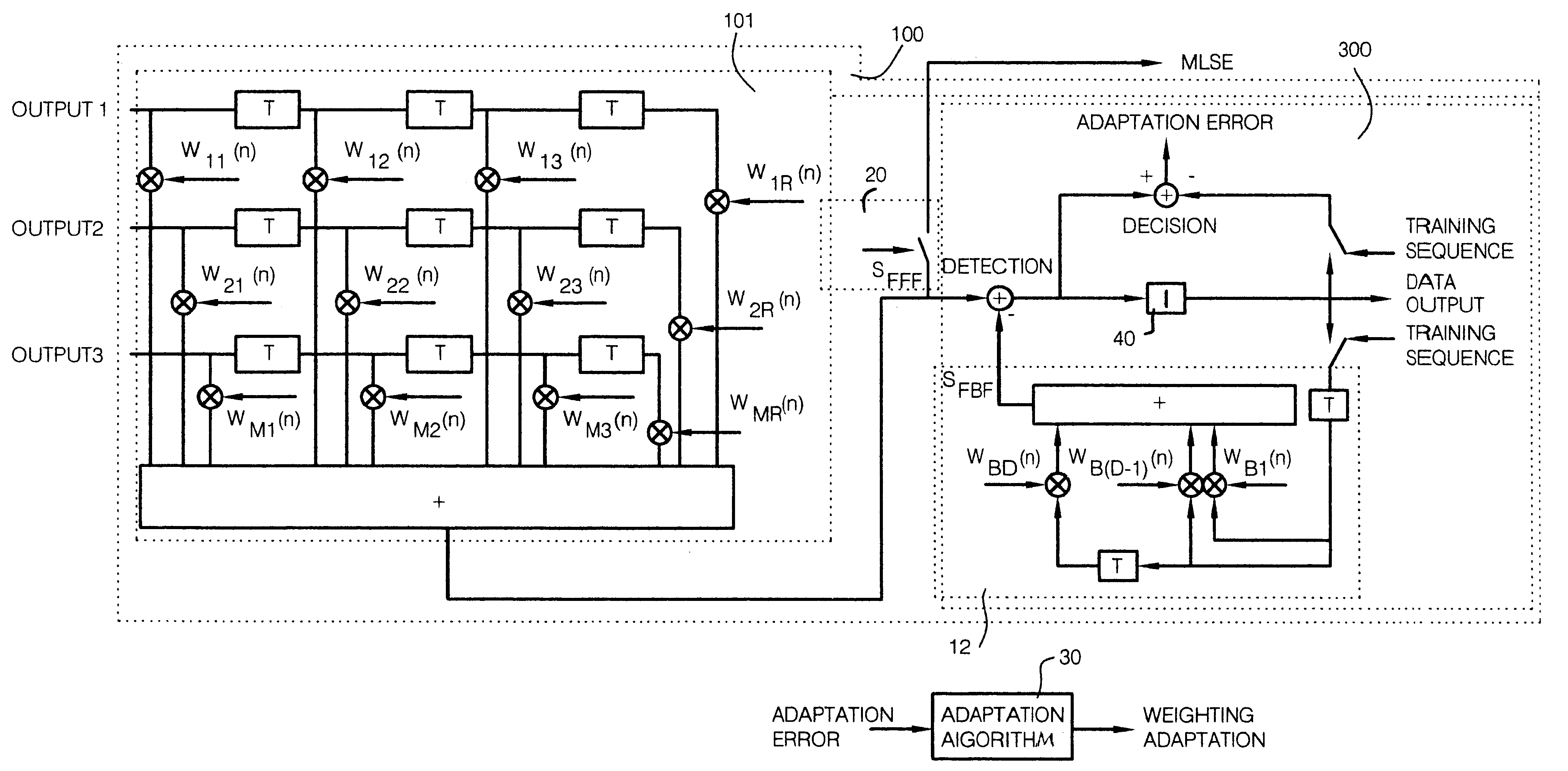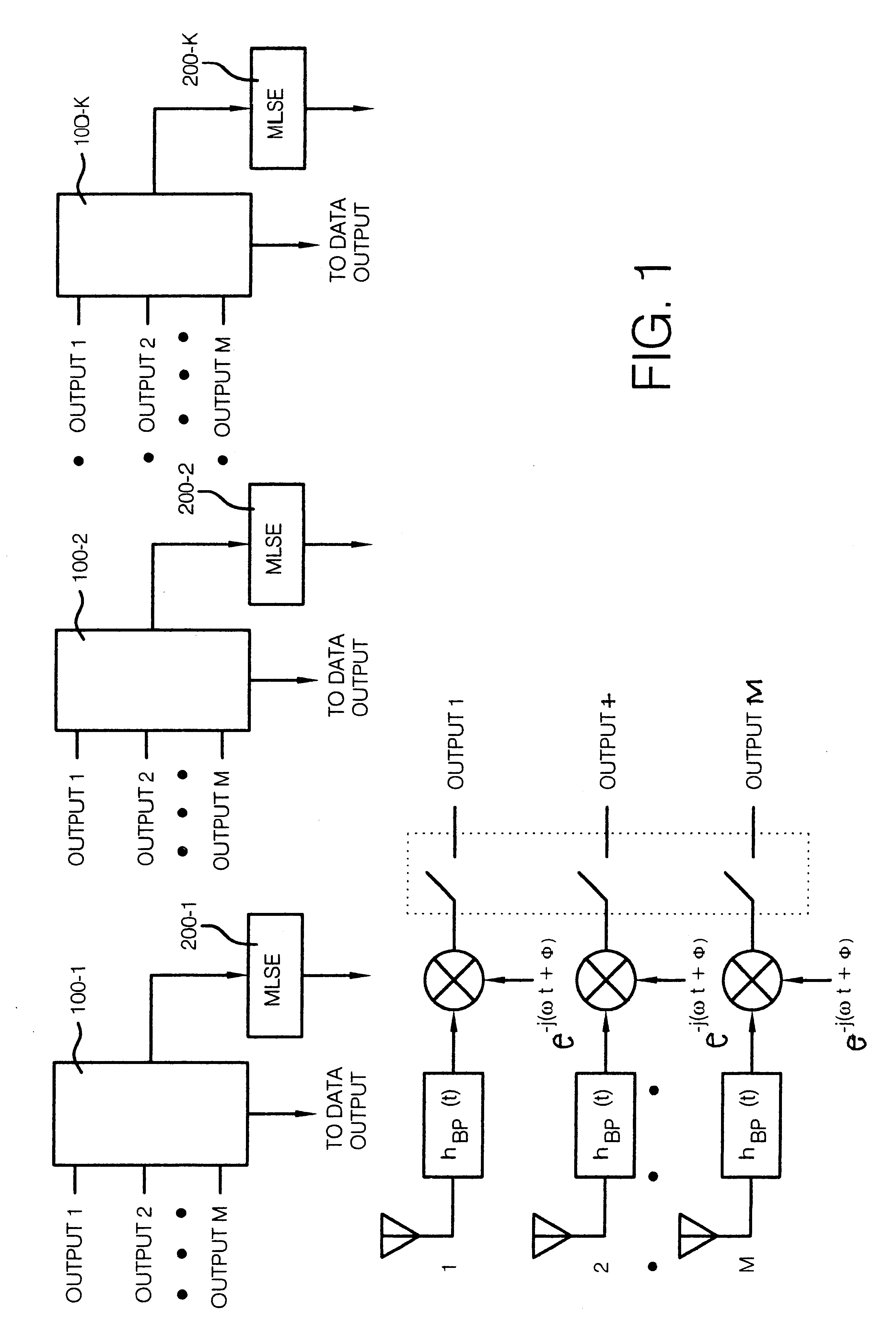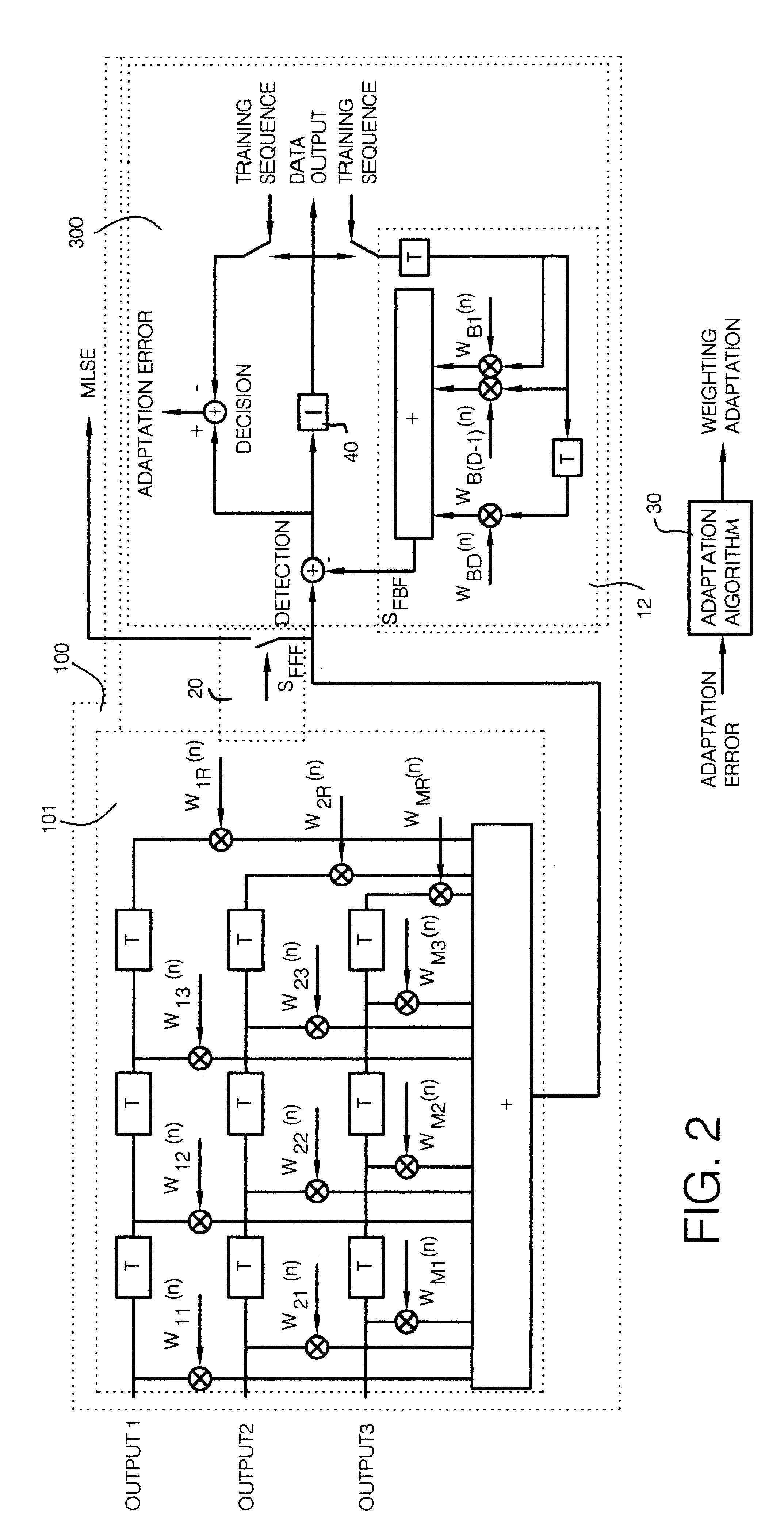Process and device for the increase of subscriber capacity in a cellular mobile radio network
a technology of cellular mobile radio and subscriber capacity, which is applied in the field of process and device for the increase of subscriber capacity in a cellular mobile radio network, can solve the problems of linear equalizer structure, low angular separation at which the process breaks down, and common channel interference as limiting factors
- Summary
- Abstract
- Description
- Claims
- Application Information
AI Technical Summary
Benefits of technology
Problems solved by technology
Method used
Image
Examples
Embodiment Construction
FIG. 1 shows a schematic diagram of the process and the associated receiver structure. It can have substantially identical structures 100-1, 100-2 . . . 100-K, which have only been symbolically indicated to simplify the drawing. The construction is visible from FIG. 2. When reference is made to a concrete element, this structure should be referred to and the reference character shown in FIG. 2 will be completed with a hyphen and a number which indicates the structure to which that element belongs; thus the feedback filter of the structure 100-2 is designated with reference character 12-2.
The antenna elements 1 to M are connected with the K forward filters 101-k characterized by their weighting factors W.sub.11-k to W.sub.MR-k. K represents the number of subscribers in the same time slot and at the same frequency and k is a number between 1 and K. The bandpass filter placed following the antenna elements are characterized by their pulse response h.sub.BP(t). The elements designated a...
PUM
 Login to View More
Login to View More Abstract
Description
Claims
Application Information
 Login to View More
Login to View More - R&D
- Intellectual Property
- Life Sciences
- Materials
- Tech Scout
- Unparalleled Data Quality
- Higher Quality Content
- 60% Fewer Hallucinations
Browse by: Latest US Patents, China's latest patents, Technical Efficacy Thesaurus, Application Domain, Technology Topic, Popular Technical Reports.
© 2025 PatSnap. All rights reserved.Legal|Privacy policy|Modern Slavery Act Transparency Statement|Sitemap|About US| Contact US: help@patsnap.com



